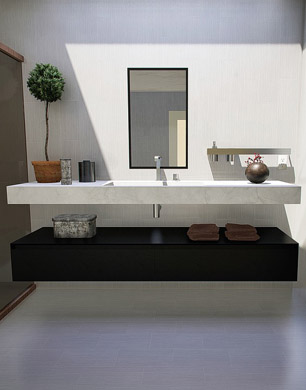When it comes to refurbishing anywhere in your home, there is always the big stress of cost hanging over your head, even more so if you need to make adaptations and renovations to current rooms. Quite often, the bathroom can be one of the most expensive areas to transform, especially if drastic renovations are needed to change it into an accessible area for someone with a disability. This can lead to delays in refurbishment, as sometimes the funds can be difficult to find, which can affect the quality of life for the home’s resident. However, there should be nothing standing in your way of having a comfortable and relaxing bathroom space, and there are luckily many solutions to this problem. In some cases, you may be able to have a full refitting of your space without the designer price tag.
Available Grants
If a bathroom renovation needs to take place due to the owner of the home or a resident having a disability, then there is a range of grants available. These grants allow you to have the bathroom of your dreams at a fraction of the cost. There is an application process, however, to undergo if you do choose this avenue of financing your bathroom, and you have to intend on living within the property for at least five years. If you need help finding out more about accessing such grants, expert companies such as Bathing Solutions can inform you on the process, and will also help you to bring your dream bathroom to life.
Bathing Options
Once the appropriate funding and financial costs have been found, the renovation can take place. Creating an accessible bathroom is no means an easy task but with professional assistance, you can discover whether a walk-in bath would be suitable for the resident or perhaps a shower would fit more seamlessly into the room. If the resident uses a wheelchair, the option of a curbless shower is ideal. It means that the opening of the shower is on the same level as the floor and it is sloped towards the drain, so water doesn’t flood the floor. On the other hand, a walk-in bath allows easier access for someone not in a wheelchair as it means the resident doesn’t need to climb over the side of the tub.
However, when making the necessary changes, many people think of a bathroom as being a plain, white space that has no room for personal touches. Yet without such touches, it can feel sterile and almost unwelcoming. In some cases, you can design your own feature wall out of tiles, which you can’t find anywhere else. From the color scheme to the towels you pick, you can make each decision carefully to achieve the look you want.
Lighting & Storage
Lighting and storage is one aspect of a bathroom which cannot be overlooked, especially in a bathroom you are making into an accessible space for someone with a disability. In this case, it’s important not to build storage under the bathroom sink if the resident uses a wheelchair as this can restrict how close they can get to wash. Furthermore, installing clever storage options such as low drawers which easily pull out and adding shelves at the correct height for the resident to reach without straining is vital. To add a touch of personality, however, many people are starting to make their own storage solutions to help them make the most of a space and give the illusion of more room. From glass jar toothbrush holders to revolving shelving, such as a Lazy Susan for toiletries, there are many avenues you can go down with this idea, while keeping the bathroom accessible for all.


